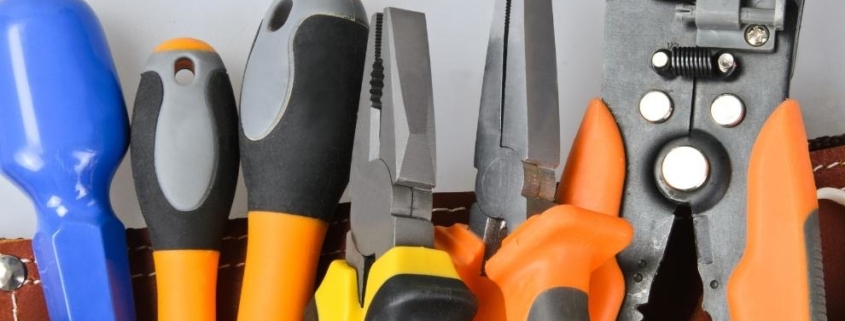Hand Tool Safety
Imagine that when you are striking a nail with a hammer, part of the hammer’s handle breaks off and hits you in the eye. You lose several weeks of pay and permanently damage your eye. Serious accidents like this one are a substantial risk when hand tools are misused or operated carelessly at the construction site. That’s why it’s important to prioritize hand tool safety.
Keep Safety in Mind
Hand and power tools are such a common part of the job that we often take them for granted. However, their use can be extremely hazardous if the right safety procedures are not followed. To keep yourself safe, follow these basic rules:
- Keep all tools in good condition with regular maintenance.
- If a wooden handle on a tool is loose, splintered or cracked, the head can fly off.
- If the jaws of a wrench are sprung, the wrench can slip.
- If impact tools such as chisels, wedges or drift pins have mushroomed heads, they can shatter on impact.
- Use the right tool for the job.
- If a chisel is used as a screwdriver, there is a danger of the tip flying off.
- Each job calls for a specific tool. Never deviate.
- Examine each tool for damage before using it and never use damaged tools. Alert your supervisor that these tools are in need of repair.
- Wrenches must not be used when the jaws are sprung; they can slip and lead to injury.
- Tools used for cutting edges must be sharp. Dull tools can be more hazardous as you must press harder when using them.
- Operate tools according to the manufacturer’s instructions.
- Iron or steel tools produce sparks that can ignite flammable substances. Check for spark-resistant tools made of alternative materials when you are around flammable gases, volatile liquids or other explosive materials.
- When using sharp tools, direct the tools away from aisle areas and away from other employees working close to you.
- Use the right personal protective equipment.
- Loose clothing, ties or jewelry should never be worn when using hand or power tools.
- Store and transport the tool properly as soon as you are done with it.
- Put the tool away as soon as you are done with it. Leaving the tool in a pathway presents a tripping and impalement hazard.
- Transport tools in a toolbox or cart, or carry them in a tool belt. Never carry pointed tools in your pocket.
- Never throw tools to another employee. Always pass them with the handle toward the receiver.
- Use a bucket or bag for lifting or lowering tools from one level to another.
- When carrying a tool on your shoulders, pay attention to clearances and other workers.
Speak Up
If you have any doubt about the safe use of a hand or power tool—or about any safety issue on the job—talk to your supervisor.
Provided by Kingsgate Insurance
This content is for general informational purposes only, and is not intended as medical or legal advice. © 2010, 2014, 2019 Zywave, Inc. All rights reserved.







Leave a Reply
Want to join the discussion?Feel free to contribute!